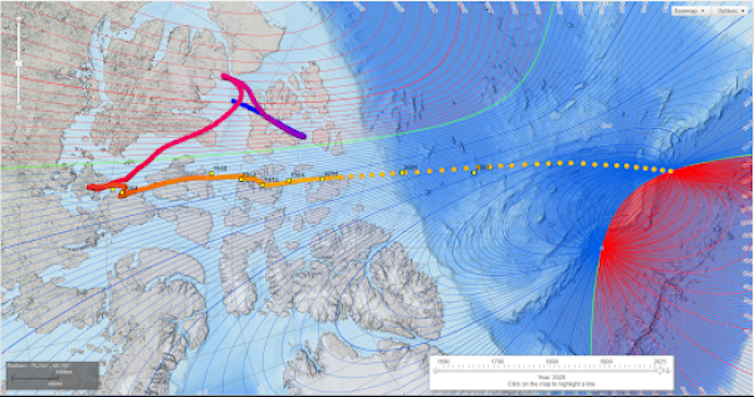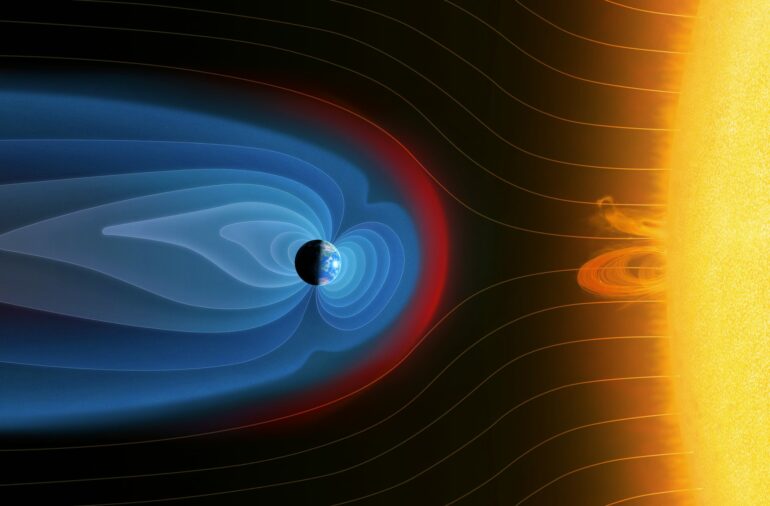The Earth’s magnetic field plays a big role in protecting people from hazardous radiation and geomagnetic activity that could affect satellite communication and the operation of power grids. And it moves.
Scientists have studied and tracked the motion of the magnetic poles for centuries. The historical movement of these poles indicates a change in the global geometry of the Earth’s magnetic field. It may even indicate the beginning of a field reversal – a “flip” between the north and south magnetic poles.
I’m a physicist who studies the interaction between the planets and space. While the north magnetic pole moving a little bit isn’t a big deal, a reversal could have a big impact on Earth’s climate and our modern technology. But these reversals don’t happen instantaneously. Instead, they occur over thousands of years.

The north magnetic pole’s observed locations from 1831–2007 are yellow squares. Modeled pole locations from 1590–2025 are circles progressing from blue to yellow.
National Centers for Environmental Information
Magnetic field generation
So how are magnetic fields like the one around Earth generated?
Magnetic fields are generated by moving electric charges. A material that enables charges to easily move in it is called a conductor. Metal is one example of a conductor – people use it to transfer electric currents from one place to the other. The electric current itself is simply negative charges called electrons moving through the metal. This current generates a magnetic field.
Layers of conducting material can be found in the Earth’s liquid iron core. Currents of charges move throughout the core, and the liquid iron is also moving and circulating in the core. These movements generate the magnetic field.
Earth’s magnetic field is generated by what’s called a “dynamo effect.”
Earth isn’t the only planet with a magnetic field – gas giant planets like Jupiter have a conducting metallic hydrogen layer that generates their magnetic fields.
The movement of these conducting layers inside planets results in two types of fields. Larger motions, such as large-scale rotations with the planet, lead to a symmetric magnetic field with a north and a south pole – similar to a toy magnet.
These conducting layers may have some local irregular motions due to local turbulence or smaller flows that do not follow the large-scale pattern. These irregularities will manifest in some small anomalies in the planet’s magnetic field or places where the field deviates from being a perfect dipole field.
These small-scale deviations in the magnetic field can actually lead to changes in the large-scale field over time and potentially even a complete reversal of the polarity of the dipole field, where the north becomes south and vice versa. The designations of “north” and “south” on…



